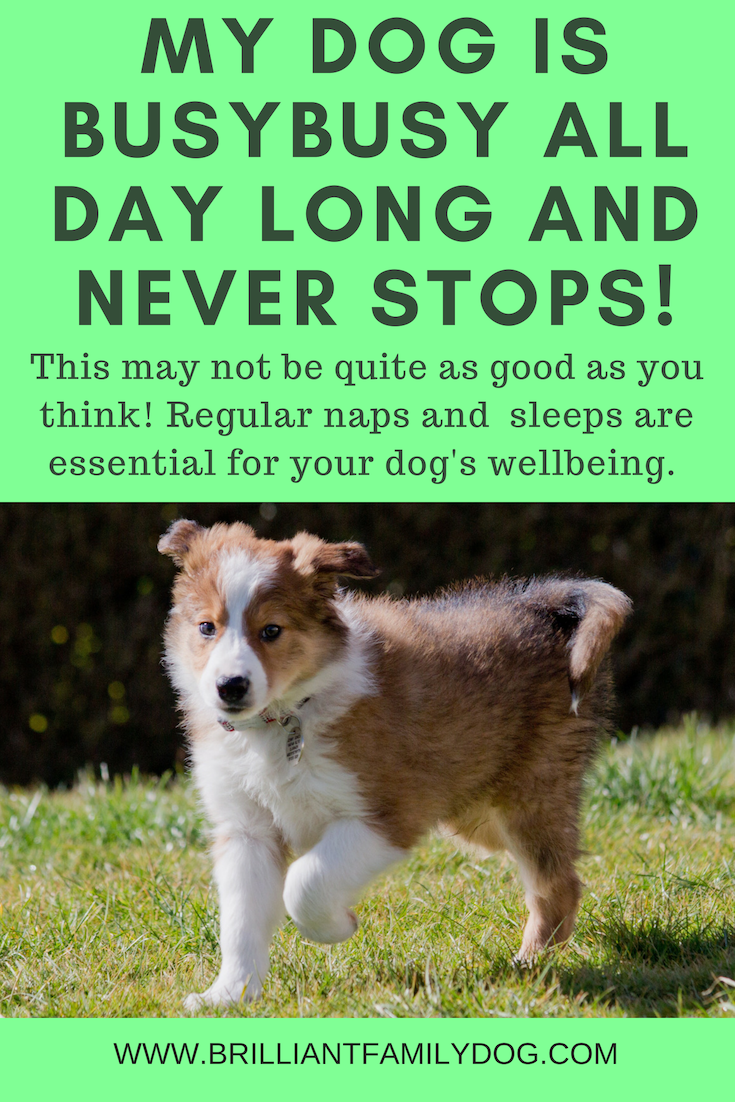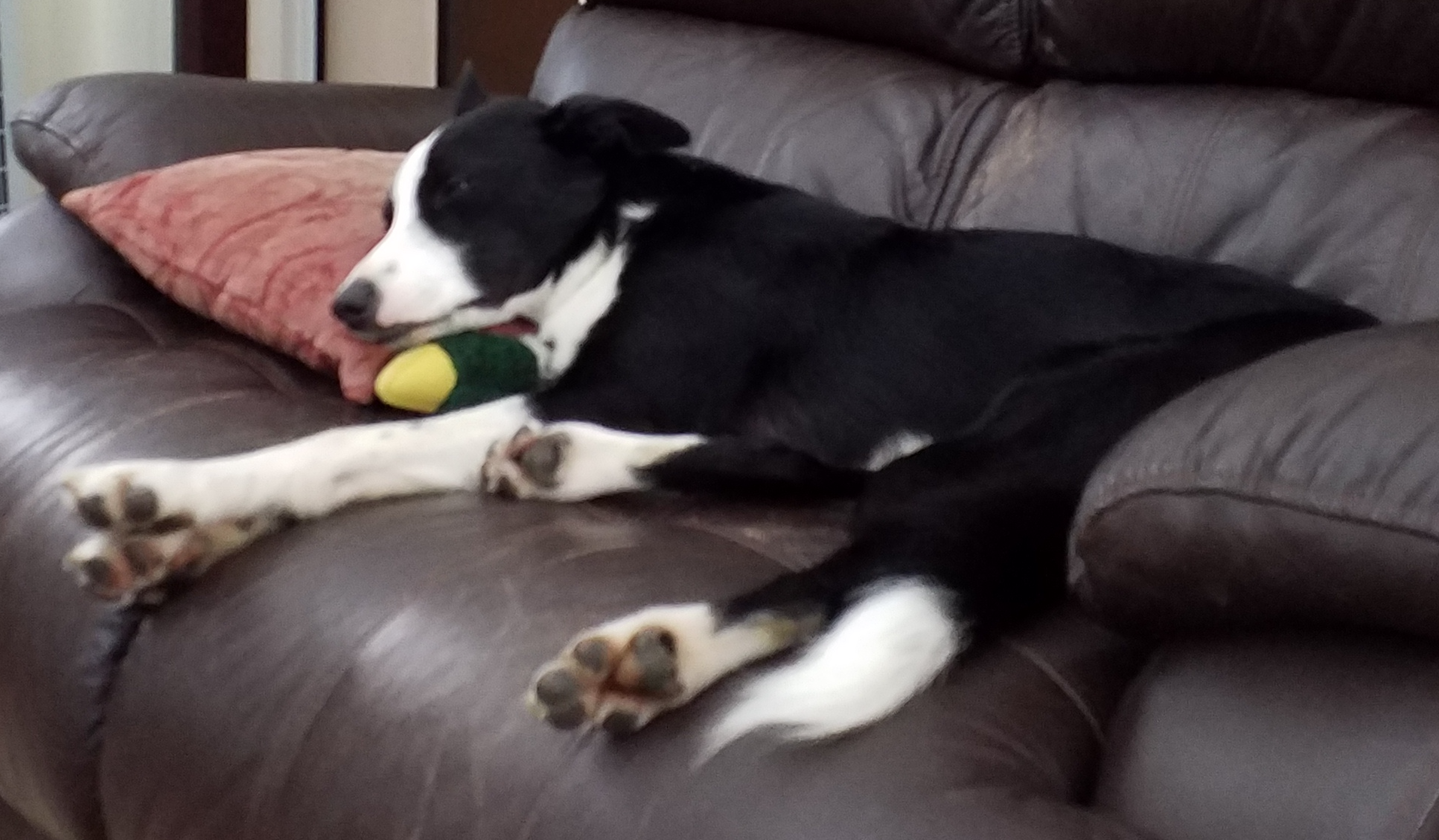One of the most common cries for help that arrives in my inbox at Brilliant Family Dog, is how to get a new puppy to sleep.
People tend to expect some sleepless nights when they have a new baby. But for some odd reason, many folk think that they’ll bring home a new puppy, play with him in the daytime, then plonk him in his basket and expect him to switch off for eight hours straight.
They get a rude awakening! Or rather, as they never get to sleep in the first place, a rude stay-awakening.
Your new puppy has been “snatched” from his comfy home, full of other playmates who doubled up as hot water bottles. He was undoubtedly confined to a small area by the breeder - no midnight ramblings! But once he arrives in his new home, he’s over-stimulated and exhausted all day, then parked in a strange large room - possibly providing him with furniture to chew and carpet and electric cables to pee on - with no company, no warm breathing fluffies, no heartbeats.
He’s cold. He’s lonely. He’s afraid.
(Yes, I know you don’t mean him any harm - on the contrary, you want to love him - and I’m sure your house is pleasantly warm. But he has no company, no-one to snuggle up with. He feels lost.)
So what does he do?
He SCREAMS! 🙀 😱 💥
Start the change with your puppy or dog with our free Workshop packed with ideas and strategies - all force-free!
How to by-pass the screaming
And it’s after a few nights of full-blooded screaming, which is rewarded by pyjama-clad owners continually going downstairs to fuss over him - sometimes even bringing their duvet and sleeping on the couch! - that I get the desperate emails.
So how about sorting this problem on Day 1?
How about planning things so that the screaming never happens?
We all know that habits can build fast, and if your puppy is spending half his night screaming and getting attention, this can fast become what he expects!
My recipe for peaceful nights from the very start, is this:
Use a crate, half-cover it, and
Shut the door.
Sleep the puppy in the crate in your darkened room, preferably right by your bed so you can sleepily dangle a hand down for him to sniff or lick.
If he seems very agitated at some stage, carry him outside, put on his lead and give him a chance to relieve himself. Then back to his crate - all virtually silent. No play, no chitchat, no food, no water.
As people unaccountably seem to find this difficult and want to add in all sorts of variations, I’ll give you some “don’ts” too:
Don’t leave food or water in the crate.
Ignore any stirrings for as long as possible.
Never wake him up!
Stop worrying about it.
My puppies - of various sizes - are all clean and dry by night by 10 weeks at the very, very latest. Some are clean and dry and sleep all night from their first night, at 8 weeks.
Mealtimes
Take a look at the timings of your puppy’s meals. At 8 weeks he should be on four a day. It takes a certain length of time for the food to transit the gut and emerge the other end.
So if your pup needs to poo in the night (assuming the poo is firm and doesn’t indicate a dietary or medical problem) you’ll need to adjust the mealtimes LATER. If he’s getting his last meal at 6 pm, for example, and it takes 10 hours to pass through him, then you have just set your alarm for 4 am!
How to know how long it takes to work its way through?
Great trick here: give him a carrot to chew and note the time. Dogs can’t digest carrot, so when you see orange chunks in his poo, note that time too. This will give you a pretty good idea of how to time his meals.
It’s a big responsibility having a new little person to look after. And when there is so much nonsensical advice and old wives’ tales thrown at you as well, it can be a worrying time.
But if you plan ahead and know that you’re doing the right thing, it all becomes so much easier!
✅ You have needs.
✅ Your puppy has needs.
✅ Balance the two and you’ll both be zizzing all night within a day or two.
But my dog’s not a little puppy!
Incidentally - the exact same applies if you’re rehoming an adult dog. She may never have been housetrained. Or she had to live outside. Or she had a totally different lifestyle from what you’re giving her. It can take at least two months for a new adult dog to settle into her new home. Meanwhile she doesn’t know which way is up!
She’s lost, disorientated … and she needs almost as much sleep as a new puppy does.
So follow the SAME RECIPE!
Ensure your new adult dog gets the same amount of downtime, and the same cosy den, as I’m suggesting for a new puppy. Dogs are keen to fit in - if they only knew what was wanted. So do just the same and enjoy your sleep.
Let me know how you get on!
Check other post that might help your brilliant dogs:
I have a new puppy: will I ever get any sleep again?
How much time does your dog spend sleeping?
THIS FREE GUIDE IS A BONUS FOR YOU WHEN YOU SIGN UP TO RECEIVE EDUCATIONAL EMAILS AND OCCASIONAL OFFERS FROM ME. YOU CAN UNSUBSCRIBE AT ANY TIME.
Privacy Policy
Privacy Policy
















